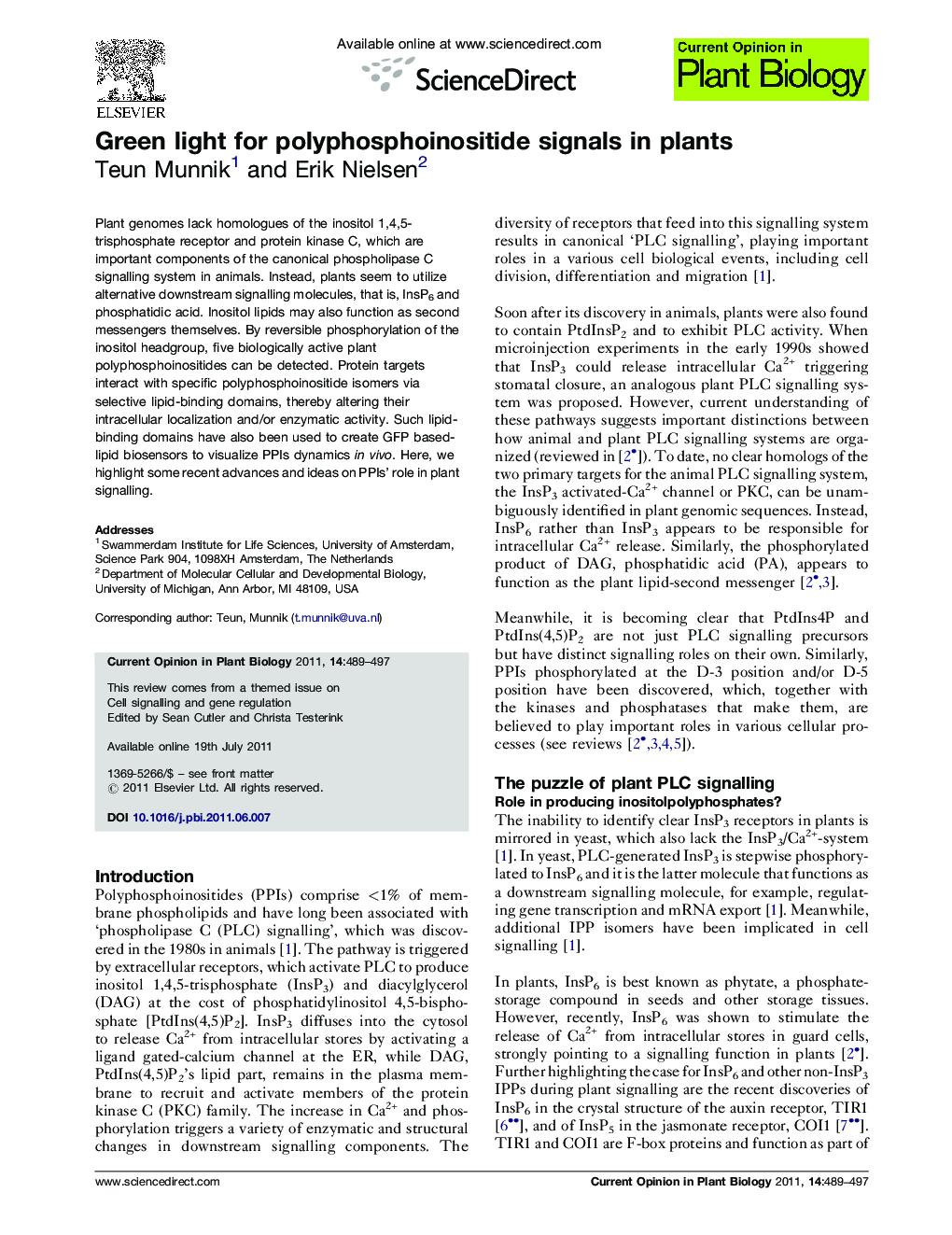| Article ID | Journal | Published Year | Pages | File Type |
|---|---|---|---|---|
| 2046829 | Current Opinion in Plant Biology | 2011 | 9 Pages |
Plant genomes lack homologues of the inositol 1,4,5-trisphosphate receptor and protein kinase C, which are important components of the canonical phospholipase C signalling system in animals. Instead, plants seem to utilize alternative downstream signalling molecules, that is, InsP6 and phosphatidic acid. Inositol lipids may also function as second messengers themselves. By reversible phosphorylation of the inositol headgroup, five biologically active plant polyphosphoinositides can be detected. Protein targets interact with specific polyphosphoinositide isomers via selective lipid-binding domains, thereby altering their intracellular localization and/or enzymatic activity. Such lipid-binding domains have also been used to create GFP based-lipid biosensors to visualize PPIs dynamics in vivo. Here, we highlight some recent advances and ideas on PPIs’ role in plant signalling.
► We compare and contrast mechanisms of PLC signalling in plants and animals. ► PtdIns(4,5)P2 and PtdIns4P functions during establishment of cell polarity and plant development. ► PtdIns3P and PtdIns(3,5)P2 roles in endocytic trafficking. ► Novel potential roles for extracellular localized PPIs during pathogenesis.
